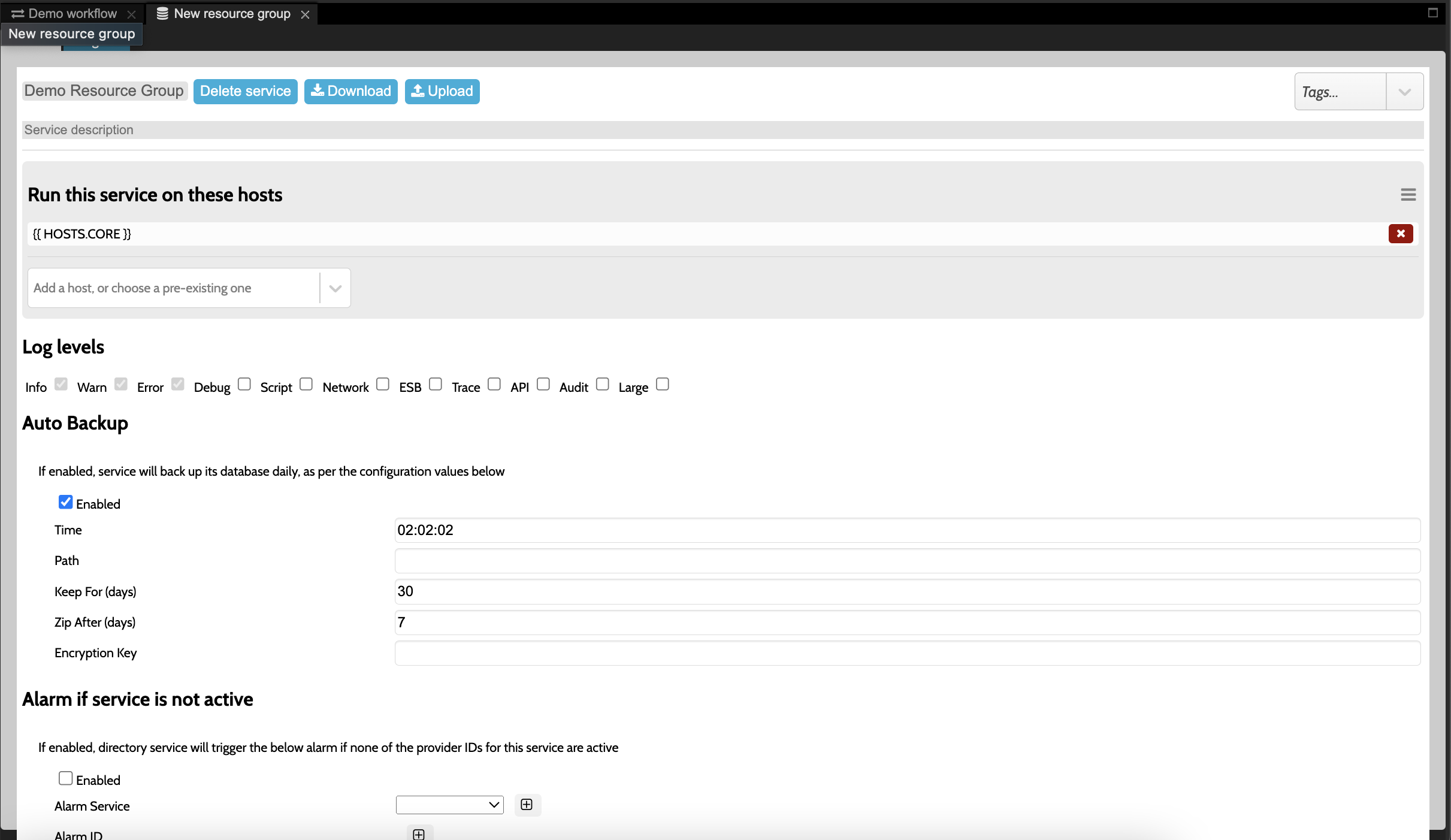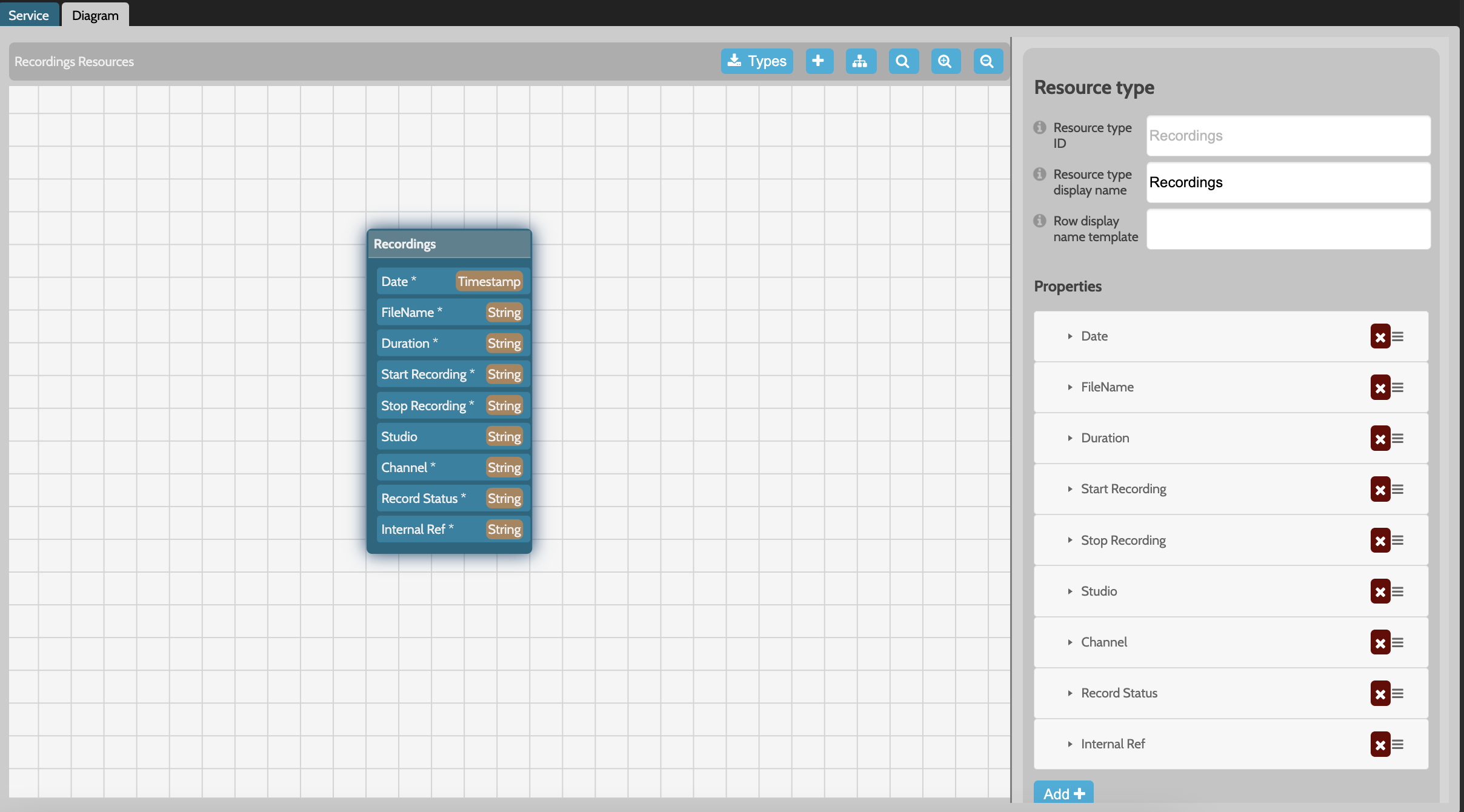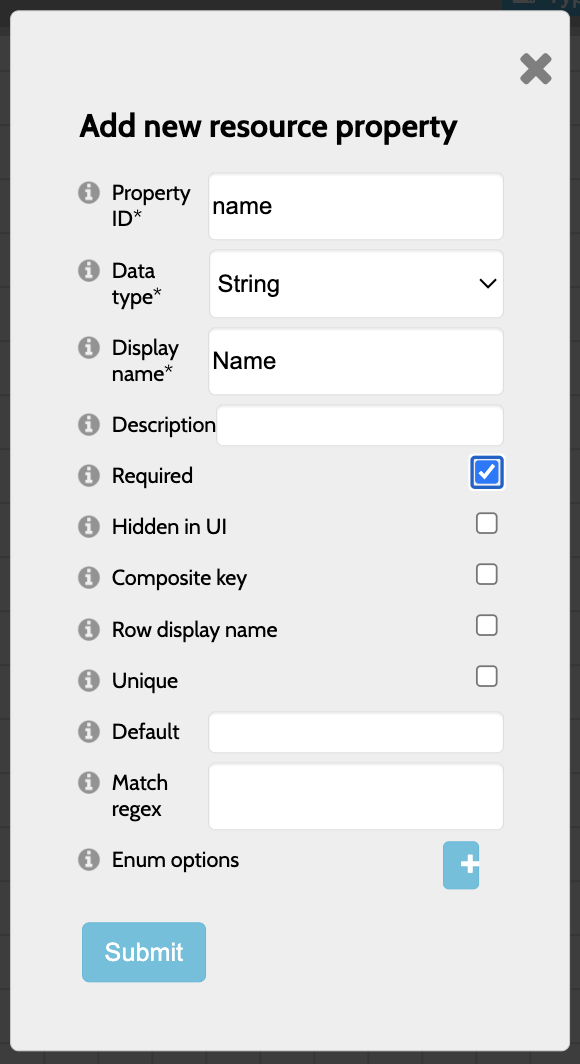¶ Resource Group Configuration
¶ Configuration
The Resource Group, as detailed here, is served by a Resource Group Service, wich is a Busby microservice.

¶ Diagram
Within the Resource Group Config Editor page, a Diagram window is available for creating various resource types and defining their properties.

¶ Properties
Each resource property encompasses different fields that can be filled, but it necessitates at least three mandatory elements: ID, Type, Display Name.

Each property in the diagram corresponds to a column in the subsequent Resource Group UI selector.

¶ Adding and Merging Resources
To populate a resource group, utilize the built-in busby. object to parse the required data. Here's a small example:
Copy code
const assignedValues= {
date: new Date(),
fileName: 'Test Episode',
duration: duration,
startRecording: recordTime.split('T')[1].slice(0, -5),
stopRecording: stopRecord.split('T')[1].slice(0, -5),
studio: studioName.split(' - ')[1],
channel: channelQueryField,
recordStatus: 'Pending',
internalRef: internalRef
}
busby.resourceGroups.recordingsResources.Recordings.addResource({
data: assignedValues
})
You can also merge an existing resource using the .mergeResource({data: assignedValues}) or addMergeResource({data: assignedValues}). This allows you to update it without creating multiple resources. Once two resources are merged, you can track all changes by clicking the dropdown window of the desired resources.
